Visit Gangtey Monastery A Spiritual Haven In Bhutan’s Phobjikha Valley
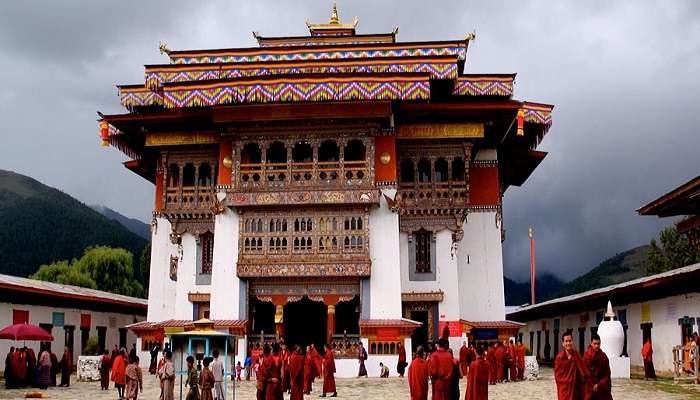
Perched majestically in Bhutan’s picturesque Phobjikha Valley, Gangtey Monastery or Gangtey Goenpa Monastery is a revered bastion of Buddhist spirituality and architectural splendour. This beautiful structure dates back to the 17th century and epitomises Bhutanese architecture influenced by Tibetan Buddhism. Besides being known for its enchanting surroundings, the valley is also home to endangered black-necked cranes and hosts several vibrant festival celebrations, attracting tourists worldwide. Gangtey Monastery is not just a spiritual or sightseeing tourist place but a significant cultural pilgrimage site and a must-see place in the region.
Gangtey Monastery History
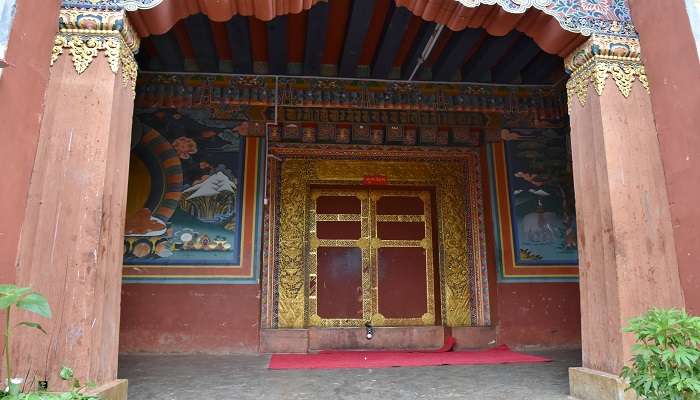
Gangteng Monastery, or Gangteng Sangngak Chöling, was founded in 1613 by Rigdzin Pema Tinley, the direct descendant of Pema Lingpa, the Bhutanese treasure revealer. Its foundation dates back to when Guru Rinpoche brought Vajrayana Buddhism to Bhutan during the 8th-9th centuries. The great treasure revealer Pema Lingpa, regarded as a reincarnation of Guru Rinpoche, found many Buddhist treasures in Bhutan in the 15th century.
Pema Lingpa predicted that his grandson would build the monastery on Gangren Mountain, which his grandson did. Originally, it was just a village monastery, and later, the structure was brought to the dzong type. The monastery was revived from 2002 to 2008 under the current Gangteng Tulku and reconstructed successfully to teach the Peling Tradition.
Also Read: Bhutan Hill Stations
Gangtey Monastery Architecture
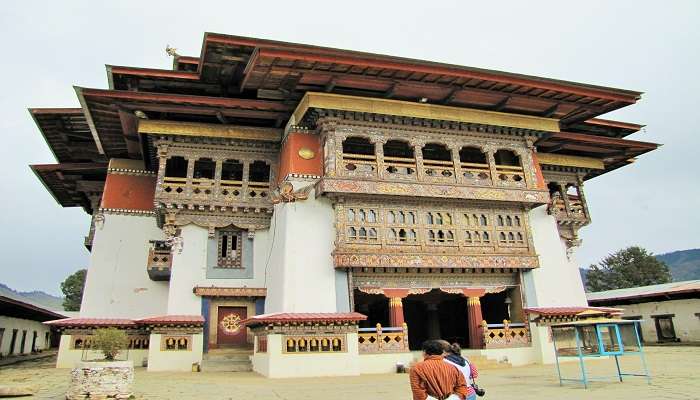
Situated in Zhejiang province and constructed of bamboo and wood by the villagers, Gangteng Monastery underwent a large-scale renovation from 2000 to 2008. The complex comprises the main Gonpa, monks’ residential area, meditators’ halls, and guest houses. Five small shrines surround the central dome and a main assembly hall of the Tibetan architectural tradition with the largest wooden pillars in Bhutan.
Relating to the structure’s layout, the monastery’s location and environment convey different facets of Buddhism. The construction has a square structure with 108 doors and windows and multiple storeys to accommodate relics, statues and texts. The reconstruction process mainly aimed to restore the building to conform to its original design and eliminate problems that rendered the construction unstable; the builders actively involved representatives of local craft printers and employed techniques characteristic of the historical epoch.
Gangtey Monastery Festivals
The Monastery of Gangteng celebrates two spectacular festivals, which reflect Bhutanese tradition and charisma. People from Bhutan and other countries usually attend these festivals.
1. The Black Necked Crane Festival

The Crane Festival is a distinct occasion in the monastic calendar and takes place on November 12th. This annual event welcomes the Black-necked Cranes back from the Tibetan plateau to the Phobjikha Valley for the winter stay. The local people view the act as receiving a blessing from God, thus giving a religious undertone to the ecological process.
The festival is wonderfully timed, as it happens barely a day after the celebration of the King of Bhutan’s birthday. The Crane Festival also reinforces the monastery’s cultural aspect and the ecological value of the Phobjikha Valley site, where people and cranes together spread awareness about the correlation between nature and Bhutan’s culture.
Timings: Monday to Sunday: 9:00 AM to 5:00 PM
Entry fee: Bhutanese Citizens: Free, Foreign Tourists: BTN 300 to BTN 500
Related Post: Bhutan Travel Experience
2. Gangtey Tshechu Festival
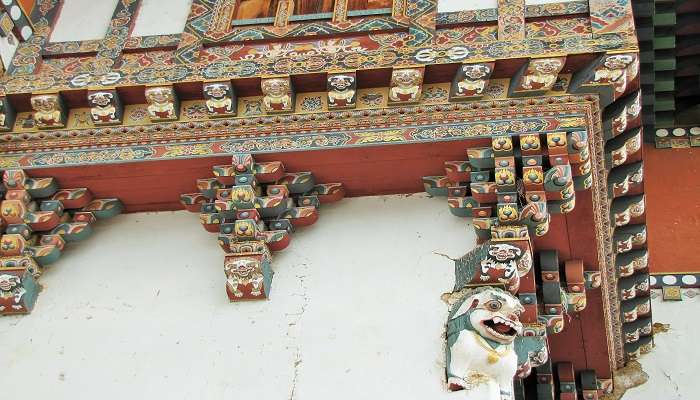
The annual festival of Gangtey Tshechu, which takes place at Gangtey Monastery, is greatly followed as it provides glimpses of Bhutan’s culture and tradition through the finest facial mask dances. This event is keenly awaited, and the Bhutanese people, as well as tourists, come forward to witness it as it gives them a peep into the Bhutanese spirituality and art forms. Thus, in 2024, this festival will be arranged from 16 to 18 September, which is to provide people with three days of jester and gaiety.
Timings: Monday to Sunday: 9:00 AM to 5:00 PM
Entry fee: Bhutanese Citizens: Free, Foreign Tourists: BTN 300 to BTN 500
3. Gangtey Trek
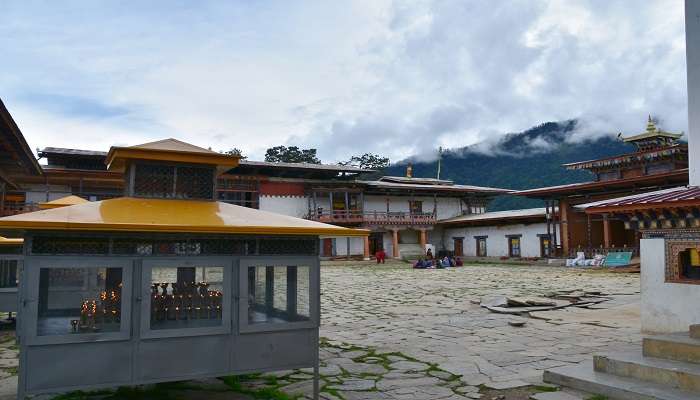
The Gangtey Trek is a moderate one that passes through the Phobjikha Valley, a glacial valley in the country situated at an altitude of 10,000 feet. This trek is perhaps one of the only glacial valleys in Bhutan and is selected as the place of winter stay for these birds of the Tibetan plateau—the Black-necked Cranes.
Timings: Monday to Sunday: 9:00 AM to 5:00 PM
Entry fee: Bhutanese Citizens: Free, Foreign Tourists: BTN 300 to BTN 500
Related Post: Homestays In Paro
Gangtey Monastery Timings And Entry Fees

Gangtey Monastery promises a serene and enriching experience for those seeking cultural and spiritual insights. Visitors are advised to dress modestly, covering shoulders and knees. Removing shoes before entering certain areas may also be required. Photography is usually allowed in the monastery’s exterior areas but may be restricted inside the temples and prayer halls.
Gangtey Monastery Timings: 9:00 AM to 5:00 PM (daily)
Gangtey Monastery Entry Fees: Nu 100 for Black Crane centre for foreigners/locals it is free
Best Time To Visit Gangtey Monastery
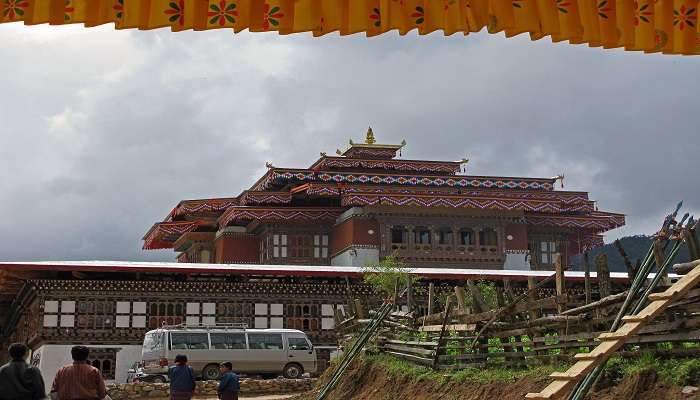
Gangtey Monastery is most recommendable during the autumn (September to November) and spring (March to May) seasons as the environmental conditions are relatively cool and refreshing, and the floral beauty is simply enchanting. Autumn provides the best sightseeing, enjoyable climate, and the black-necked cranes in the valley of Phobjikha, whereas spring delivers Rhododendrons in bloom and greenery. If one visits during September or October, a meaningful Gangtey Tshechu festival with beautiful dances and other performances is available.
Suggested Read: Temples in Bhutan
Related Post: Temples In Bhutan
Other Attractions Near Gangtey Monastery
The Phobjikha Valley, home to Gangtey Monastery, has several notable attractions. The Black-Necked Crane Information Center provides insights into the endangered cranes that often migrate to the valley, and visiting the Kumbu Lhakhang temple promises spiritual bliss.
1. Black-Necked Crane Information Centre
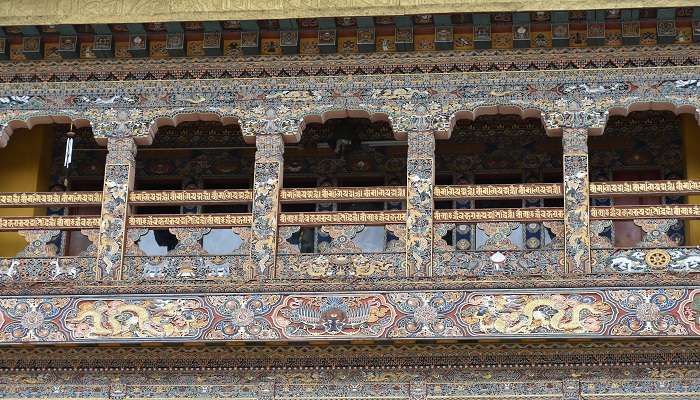
Bird lovers, especially when winter birds such as the Black-Necked Cranes are in season, visit this centre for bird watching. Providing high-quality spotting scopes, one can watch these tender birds in their natural environment. The centre also presents informative displays on cranes and their protection, the ecology of this region, and the interaction between the cranes and the people of Bhutan. This place has become a must-visit destination that caters to lovers of nature and those who wish to understand Bhutan’s biological diversity.
Timings: Monday to Friday: 9:00 AM to 4:00 PM; Saturday and Sunday: 9:00 AM to 4:00 PM
Entry fee: Adults: BTN 200, Children: BTN 100, Foreign Tourists: BTN 300 to BTN 500
2. Kumbu Lhakhang
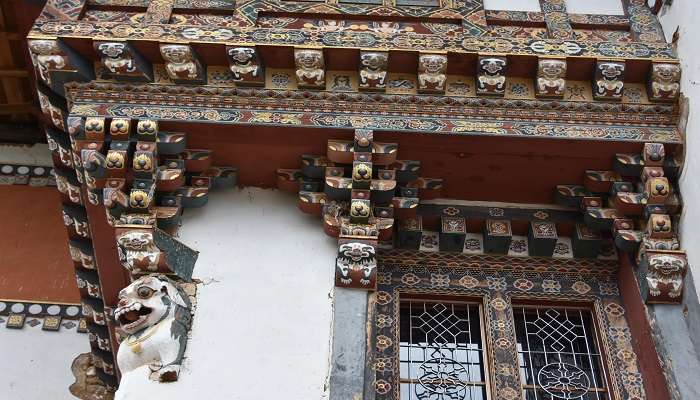
Lhakhang of theараt Kumbu, or the Temple of Divine Madman, is not far from Gangtey, which gives foreign visitors a glimpse of Tibetan/Buddhist architecture in Bhutan. With such religious structures, beautiful paintings and sculptures intended for worship, frescoes, icons, and statues of the Buddhist gods and other symbols. The site’s serenity allows for reflection and provides information regarding the customs of the region’s people or the structure’s purpose and utilisation. Monks are visible to the public. Hence, visitors can easily see them chanting or immersed in deep meditation. This is another advantage of the location of the Lhakhang since the vantage point provided is as good as that of a movie set.
Timings: Monday to Sunday: 9:00 AM to 5:00 PM
Entry fee: Bhutanese Citizens: Free, Foreign Tourists: BTN 300 to BTN 500
Related Post: Hiking In Bhutan
3. Gangtey Nature Trail
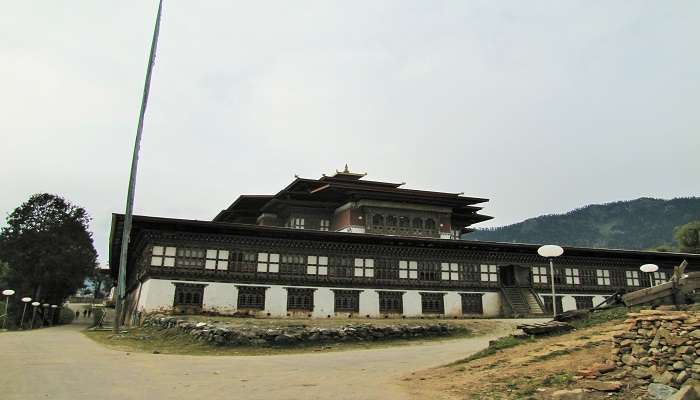
Image Credit: Chuck Moravec for wikimedia commons
This beautiful Trekking path will pass along the beautiful Phobjikha Valley, one of Bhutan’s most beautiful parts. The trail is rather winding, crosses territories with dense and tall trees and meadows, and in some parts, it is close to the clean and fresh streams. They get to see various native plant species and even birds of different species, considering the area’s local features. The path opens many opportunities to shoot beautiful photos of the valley and its broad landscapes. It is best suited for bird watch enthusiasts, photographers, and anyone who looks forward to a calm time in nature in the Kingdom of Bhutan.
Timings: Daily open
Entry fee: No entry fee
How To Reach Gangtey Monastery
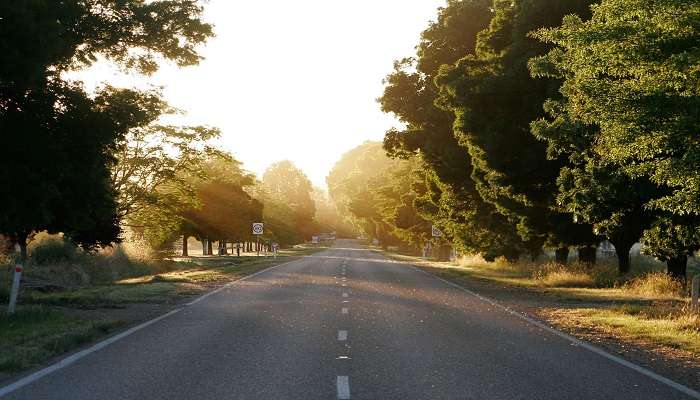
Gangtey Monastery is in the com Vel Wangduephodrang, approximately 3 3-hour drive from Thimphu, the capital of the Kingdom of Bhutan. Here are the ways to reach the monastery:
By Road: The road is the most convenient means of transport to Gangtey Monastery. One can certainly hire a private taxi or bus to reach Dzong from either Thimphu or Punakha. The distance from Thimphu takes approximately 3 hours, while Punakha Dzong takes approximately 2 hours.
By Flight: The airport accessible to Gangtey Monastery is Paro International Airport, the only international airport in Bhutan. Transportation to the monastery can be obtained using a taxi or a bus as one is from the airport. The monastery is 166 kilometres from the airport and can be easily covered in 4.5 hours.
By Bus: Presently, there are daily buses to Gangtey Monastery from the airport. Once you touch the ground, you can take any of the buses to the monastery.
You May Also Like To Read: Honeymoon In Bhutan
When preparing for your trip to Bhutan, ensure that this place, the Gangtey Monastery, is part of your tour. From the great architectural wonders to the spiritual and emotion-touching festivals to those fascinating treks, one gets to understand Bhutan’s spirituality. It would be a shame to miss the performance of the graceful black-necked cranes or join the dancing festivities of the Tshechu. Gangtey Monastery will or could be the most memorable part of your trip to the Kingdom of Bhutan.
For our editorial codes of conduct and copyright disclaimer, please click here.
Cover Image Source: Facebook
Frequently Asked Questions About Gangtey Monastery
Are the people allowed to join the monks for meditation in Gangtey Monastery?
Yes, it is, and guided meditation practices are usually possible here in the morning like before the sun rises or in the evening before it gets dark.
Can I find any homestays around the area of Gangtey Monastery to have a typical structure of the Bhutanese house?
Absolutely! Homestays are available in several families within the PHobjikha Valley whereby the visitors have the opportunity of getting an experience of traditional Bhutanese hospitality.
Which local dish should one consider when visiting the Gangtey Monastery?
Add to this list the “Hoentey”, another popular dumpling that can primarily be found only in the Gangtey area and is usually prepared during festivals and such events.
What are the do’s and don’ts when it comes to dressing when visiting Gangtey Monastery?
Yes, it is recommended that women’s shoulders and men’s knees should be covered, otherwise, it is better to dress appropriately, it is rather cool in the monastery, and it is also better to take a light jacket.
Are there any specific feasts related to the full moon that the public can join at Gangtey Monastery?
However, the monastery has established monthly full moon (Tshedzin) ceremonies, which are open for visitors, thus providing the travellers with some information on the leaving of Bhutanese Buddhism.
People Also Read:
Namdroling Monastery Golden Temple Sherabling Monastery Namgyal Monastery

Innovative Content Writer Focused on Producing High quality, Original Content that drives traffic and engages readers. Experienced in Content strategy and analytics to measure content performance using tools such as SQL, Power BI, Excel.











